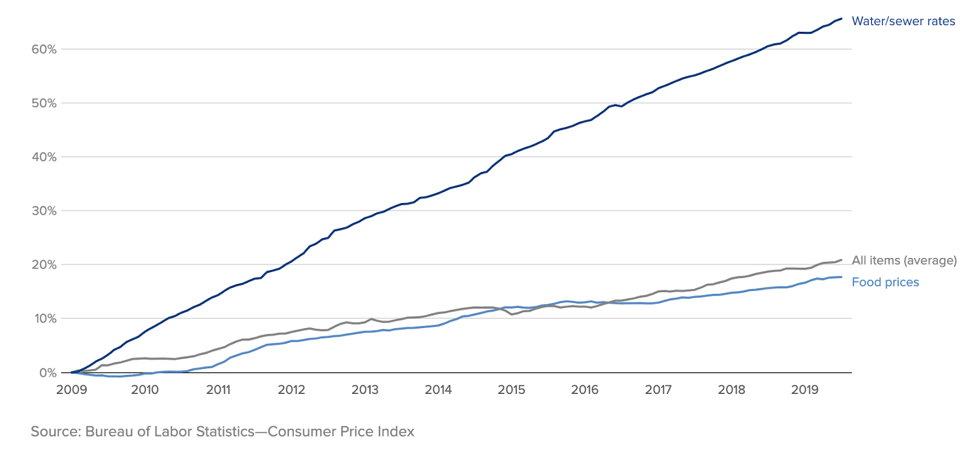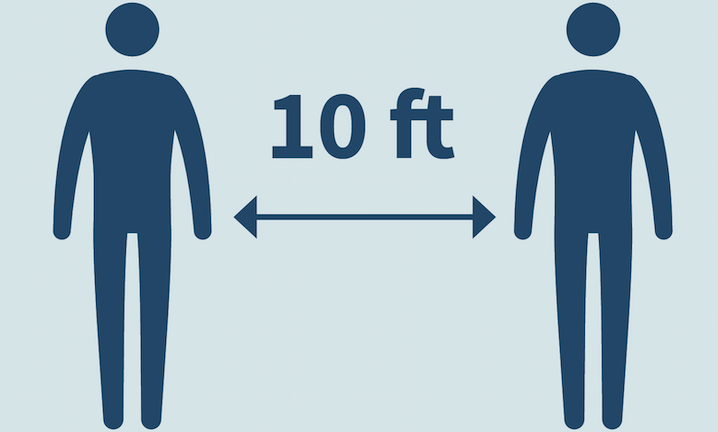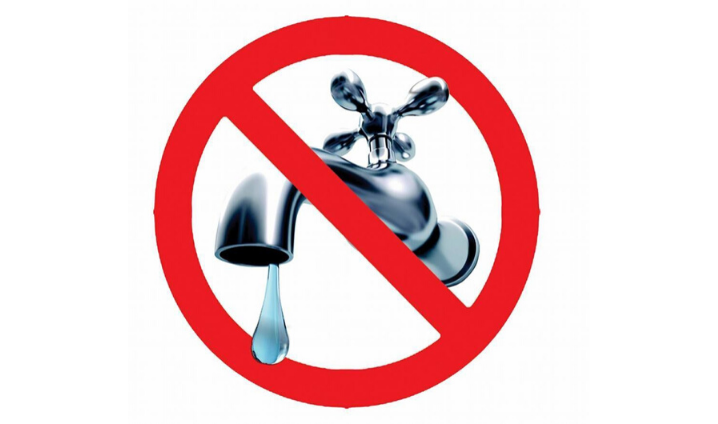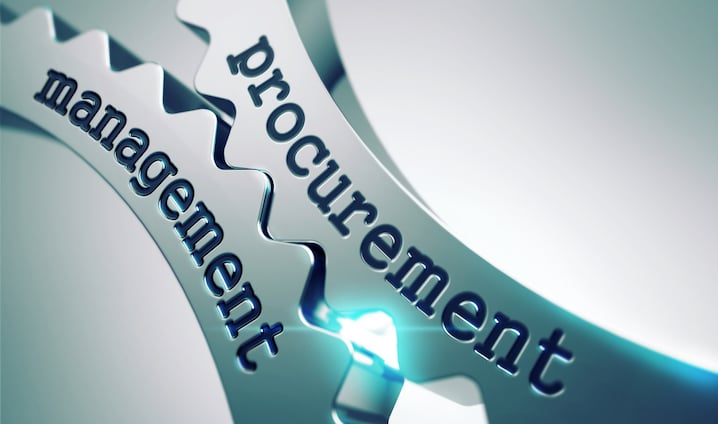The problem is that water is not free. Or inexpensive. Providing safe and reliable water service is both difficult and costly. Water is very heavy and thus hard to move. Increasing degradation of our source water supplies due to contaminants means that greater levels of treatment are required to make water potable. Also, water distribution infrastructure throughout the United States is failing. As an industry we have not made needed investments in maintaining our pipes to ensure ongoing reliability. The American Society of Civil Engineers gives our water infrastructure a D grade and estimates that more than 240,000 water main breaks occur each year.
"Providing safe and reliable water service is both difficult and costly."The need to invest in infrastructure remediation is leading to higher water costs for customers. Americans will pay an average of more than $100 per month for water services this year, which is an increase of more than 30% over the last decade. More telling, the rate of water service price increases is growing faster than inflation. This is leading to a growing affordability crisis.

"It is inevitable that affordability challenges will increase for the most economically disadvantaged members of our society."Most measures of affordability focus on the percentage of Median Household Income (MHI) that is allocated for water services. It is generally agreed that water and wastewater services exceeding 4.5% of MHI is considered ‘unaffordable’. As water services become increasingly expensive, it is inevitable that affordability challenges will increase for the most economically disadvantaged members of our society.
This dynamic is leading to significant challenges to water suppliers as well. An estimated $500 million in water service revenue is lost every year due to non-payment. How can water utilities be expected to afford to both run their operations while simultaneously investing in wet infrastructure when such a significant portion of their revenue is uncollectible? Clearly something has to change.
"Compassionate and pragmatic solutions take a multi-pronged approach to support customers in need while ensuring timely payment from the broader customer base."The challenge is to find solutions that are both compassionate and pragmatic. The issue of affordability is very real for many customers, and yet utilities must maintain revenue in order to fund ongoing operations. This means establishing a multi-pronged approach to support customers in need, while ensuring timely payment from the broader customer base.
- Measurement
While it may be a cliche, it’s also true - you can’t manage what you can’t measure. Better data acquisition and management tools are critical for water suppliers to get a handle on who is using water and when. A deeper view of water operations and consumption allows utility managers to prioritize programs, improve operational efficiency, and reduce costs. These are the first steps needed to underlie any ongoing affordability effort. - Controls
The more that control automation is brought into utility operations, the more that utility staff can focus on important exception management. Controls also create the opportunity for remote flow management which can aid in revenue collection and drive down field service costs. Newer technologies allow wireless controls to be implemented using existing cellular networks, allowing utility managers to focus on their core competence of water operations. - Customer Assistance Programs (CAPs)
CAPs are a useful way to support low-income residents and improve payment reliability. However there are stigmas surrounding these programs and the typical application process may prove daunting for less sophisticated customers. An expansion of these programs and better communication about the benefits are an important element of the multi-pronged solution. - Conservation
Another benefit of improved measurement capabilities is the ability to target water-use efficiency messaging to those who are most likely to benefit from reduced consumption. By helping those struggling with affordability better manage their water spend, non-payment rates go down and customer satisfaction improves. - Water Rates
Creating lifeline rates for use in Customer Assistance Programs or other tiered rate structures which provide for basic water services at low cost can help address affordability concerns. Well constructed water tariffs also shore up utility income by charging more for profligate usage, balancing out costs with revenue.






